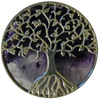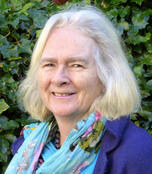About 'the Group'
Three Young Men in Soho
In the late 1950s, three young men frequented the cafes of Soho. Alan Bain, Glyn Davies and Tony Potter held court in the coffee bars such as the Gyre and Gimble, and the Villiers, discussing the ‘bigger questions of life’. Others came to join them - it was the era just after the war when many young people were dissatisfied with old views, and were seeking a new way forward. However, the three men mentioned were after something more; they shared a common interest in the Tree of Life, the mystical Cabbala, and were keen to open up a path for others. A nucleus of genuine seekers began to cohere around them, and so ‘the Group’ was born.
Anyone who joined in the discussions seriously was slipped a piece of paper with an address, time and date on it. It was an invitation to join the core group, which met and worked privately. Over time, it became a network of groups, often working under the name of ‘The Society of the Common Life’.
Glyn was not long out of the RAF, Alan from the Merchant Navy, and Tony liked to say he had been employed in the Secret Services. All had come to a point when they wanted to explore the mysteries of life, and they had each found a doorway through to a line of work based on the Cabbalistic Tree of Life. (An introduction to the Tree of Life can be found here). Alan was 24, Glyn was 28, and Tony was 26. They were indeed young, but had lived through the war and served in the forces, so had matured faster, perhaps, than today's younger generation. Additionally, this was a tradition of 'learn and pass it on', rather than a 'guru' based system.
Glyn Davies had been initiated into a line of Cabbala by a teacher known only as ‘John Smith’ from the Hull area of Yorkshire. Only one or two students at a time had been initiated in the past, but now Glyn judged the time right to open it to a wider field.
Alan Bain had gone through a crucial life and death experience which propelled him into the study of the Tree of Life. He was a Christian, and later in life was ordained as a bishop in the Independent Catholic Church Federation.
Tony Potter was ‘the clever one’, an editor of scientific journals, and often acted as the spokesperson for the group, and to engage with potential members.
For about five years, from 1957 onwards, they collaborated in running ‘the Group’. It was in fact a loose-knit collection of people joining and leaving, and of various sub-groups. Dion Fortune’s ‘Mystical Qabalah’ was the main text used, and Watkins was the go-to bookshop in Cecil Court, where it still operates today. However, there was a very limited choice of reading available at the time. Some of the more serious members acquired readers’ tickets to study older works at the British Museum Library. But the main emphasis was on observing and discovering for oneself. There were exercises, pathworkings and rituals to focus energies and deepen understanding.
Soho Café Life
Favourite haunts were The Gyre and Gimble, in John Adam Street, the Cross and the Florence in Villiers St, and the French in Old Compton Street (the café, not the pub of the same name). At night time, Mick’s on Fleet St would serve you at any hour, and for music, the Nucleus on Monmouth Street was one of the places to hang out, along with Bunjis and Les Cousins.
Soho society was mixed, to say the least, and the group members took their social role seriously. Often they helped the waifs and strays of Soho, with advice and money for a meal, a bed for the night or even a train fare home. In this they were probably encouraged by Ernest Page, an older man and their mentor in astrology.
 Look at Life Coffee Bar (1959): The three astrologers meet at about 5:45 into the video.
Look at Life Coffee Bar (1959): The three astrologers meet at about 5:45 into the video.
As luck would have it, a documentary called ‘Look at Life’ has captured two of the three group leaders in conversation with Ernest Page. Ernest was not a Cabbalist as such, but he practised astrology with great dedication and precision. He was also a poet, and helped to found a homeless charity even though he was often homeless himself. He became warden of a hermetic order called ‘The Sacred Word’. About Ernest Page
The air in these cafes was thick with cigarette smoke, and there was often jazz music or even a rising pop star such as Tommy Steele playing in the background. Other aspiring writers, artists and musicians also hung out in Soho, and some probably had brushes with the Group. Colin Wilson is said to have come along to a few meetings; Michael Moorcock shared a flat with Glyn Davies at one point. And Walter Lassally, who became internationally renowned as a cinematographer, was a regular and committed member of the Group.


